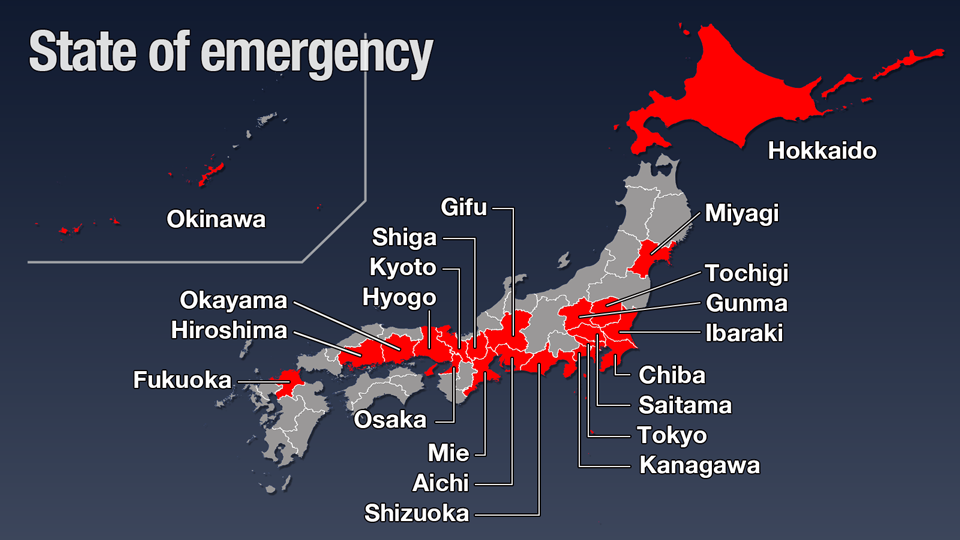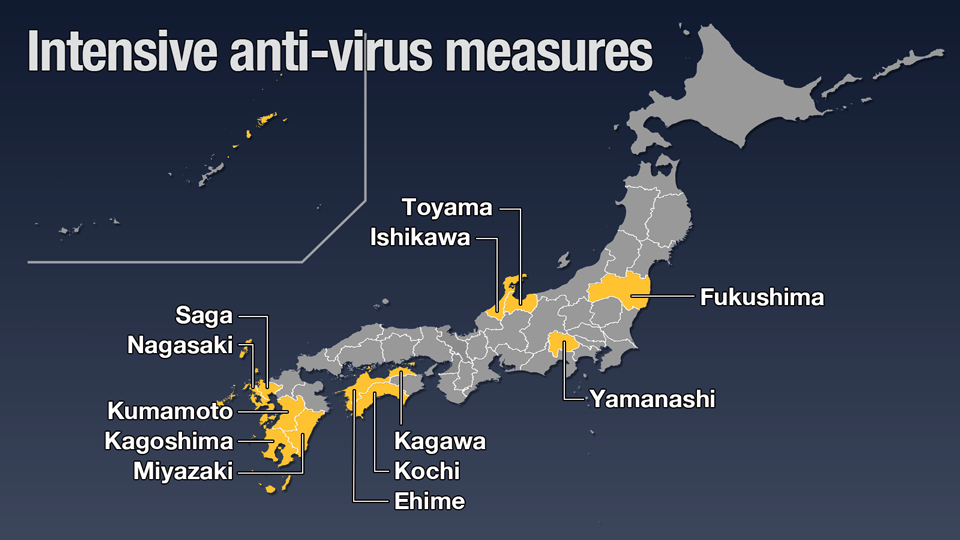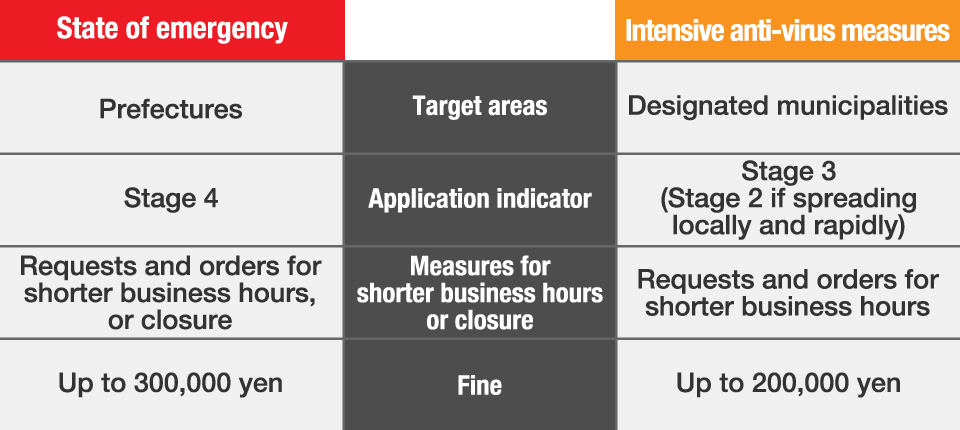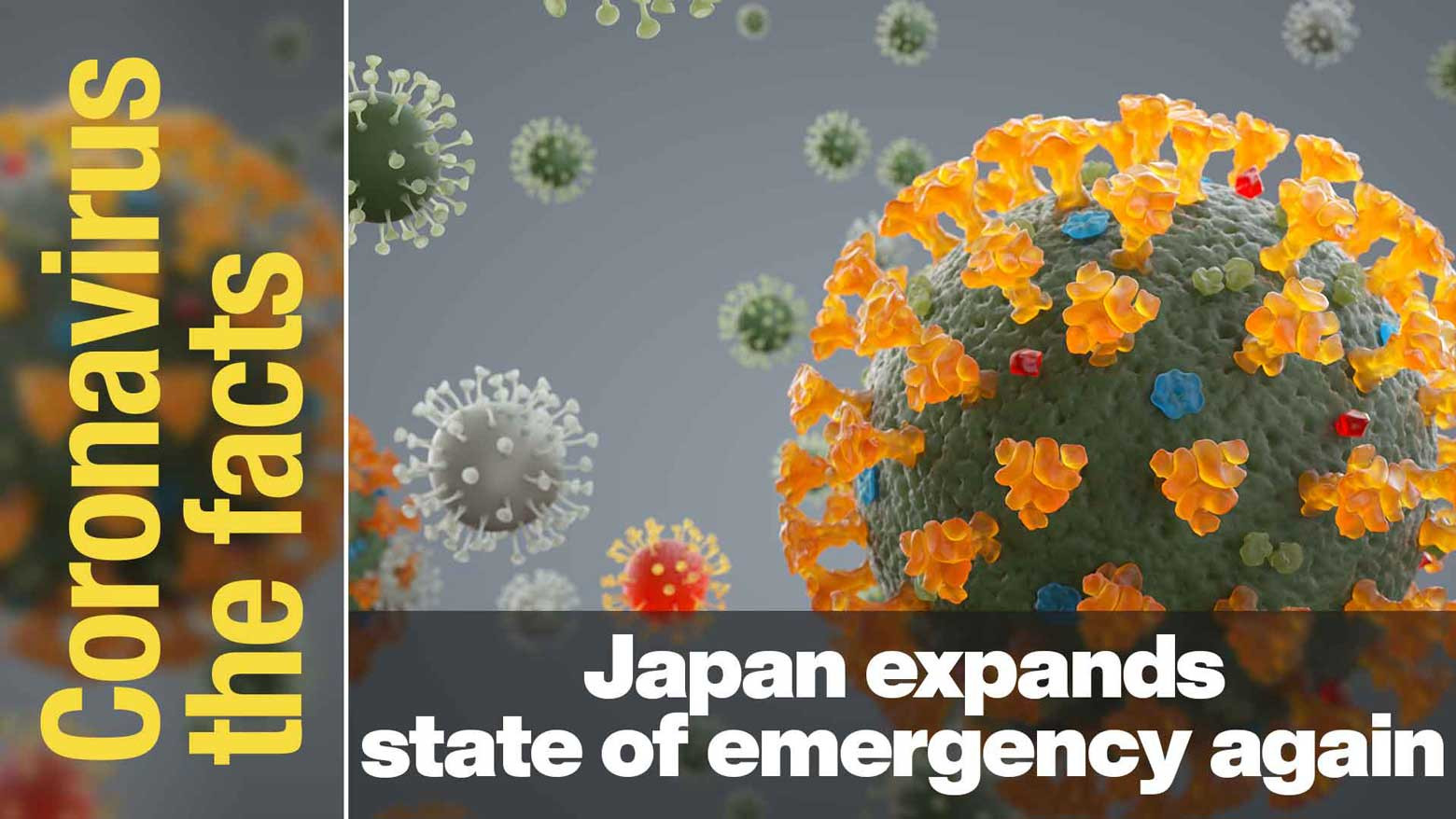This is our series on key coronavirus-related information. Click here to read other installments: #Coronavirus the facts. Find the latest information and answers from experts on everything COVID-19.
State of emergency expanded further
On August 27, the Japanese government expanded its fourth coronavirus state of emergency yet again to include a total of 21 prefectures. It also widened its list of prefectures covered by intensive anti-virus measures to 12 prefectures. Both measures will run through September 12.
The move comes as the Delta variant continues to push new case totals up across the country. The number of seriously ill patients is also rising and has hit record levels. Many people, especially in areas around Tokyo, cannot even be hospitalized as the medical system is stretched to breaking point. Some patients are dying at home.
The health ministry says 118,035 infected people were recovering at home as of August 25. A source close to the Tokyo Metropolitan Government said 63 percent of infected people in Tokyo who called for an ambulance from August 9-15 were unable to be admitted into a hospital, despite worsening symptoms.
“Protect your own lives”
The nationwide tally for August 27 was 24,200 new cases, while the Tokyo Metropolitan Government confirmed 4,227 new cases. The daily total for Tokyo has fallen compared to the same day the previous week for five straight days. But experts remain cautious.
On August 26, experts monitoring infections in Tokyo said the situation was at a “disaster level” and the medical system would soon be unable to save lives.
They added that though the number of new cases appears to have leveled off, the situation could get worse if infections remained at the same level and compared it to a natural disaster, saying “it is critical to protect your own lives first.”
Target prefectures
The eight prefectures of Hokkaido, Miyagi, Gifu, Aichi, Mie, Shiga, Okayama, Hiroshima have been added to the state of emergency. The declaration already covered Tokyo, Saitama, Kanagawa, Chiba, Osaka, Okinawa, Ibaraki, Tochigi, Gunma, Shizuoka, Kyoto, Hyogo and Fukuoka prefectures.
The government expanded its intensive anti-virus measures to cover Kochi, Saga, Nagasaki and Miyazaki prefectures. The measures already included Fukushima, Ishikawa, Toyama, Yamanashi, Kumamoto, Kagawa, Ehime and Kagoshima prefectures.
The state of emergency and intensive measures covered the Tokyo Olympics and the mid-August Obon holiday. They will now also include the Paralympics, which started on August 24 and end on September 5.


Managing the medical system
The government says it plans to work with municipal governments in an effort to prioritize bolstering the medical system. This will involve strengthening the system to monitor the condition of infected people recovering at home; installing additional temporary facilities for patients, such as those that provide oxygen; and securing the services of high-level medical institutions in treating infected women who are pregnant.
Limiting crowds
The government says controlling the movement of people is crucial to containing the virus. It will introduce a range of measures to achieve this, including: asking department stores and shopping centers to set entry restrictions; asking people to refrain from going outside; and asking businesses to reduce commuting by 70% by encouraging employees to work from home or take time off.
Tokyo measures
The key measures in place in Tokyo are listed below. For details and information on other prefectures, please visit the individual prefectural government websites.
Excursions
- Requests remain in place for residents to avoid nonessential excursions, and refrain from travel between prefectures.
- Companies are urged to implement remote working policies, with the goal of reducing the number of commuters by 70 percent. In-office employees should finish their work by 8 p.m. and go home directly.
Bars and restaurants
- Bars and restaurants that serve alcohol are asked to close. Those that don’t provide alcohol are allowed to operate until 8 p.m. Takeout and delivery services can continue as normal.
- People are asked to refrain from drinking in groups on the street or in parks.
Large commercial facilities
- Large-scale commercial facilities, including department stores, are asked to close by 8 p.m. Areas within these sites that offer everyday products can remain open as normal.
- Theaters, exhibition halls, and movie theaters are asked to close by 9 p.m.
Events
- Event organizers are asked to limit venue capacity to half or 5,000 people, whichever is smaller. Events must end by 9 p.m. They are asked to urge attendees to not stop anywhere on the way to or from venues.
Differences between intensive measures and state of emergency
Intensive anti-virus measures are part of the revised coronavirus special law enacted in February. They allow the governors of targeted prefectures to take special steps without declaring a state of emergency. The prime minister decides which prefectures are covered and for how long.
While a state of emergency covers an entire prefecture, intensive measures allow governors to focus on specific municipalities.
A state of emergency can be declared when the infection situation reaches the highest level on the government's four-tier alert system. The intensive measures correspond with Stage Three, but can also be applied at Stage Two if infections are spreading rapidly.

Requests and orders
Under intensive measures and state of emergency declarations, governors can ask businesses to shorten operating hours. If a business ignores the request, governors can issue an order and publish the name of the business. On-site inspections from local officials are also permitted.
A request for business closure can only be made under a state of emergency.
Fines
A prefectural government can impose fines on businesses that don’t cut operating hours, or refuse on-site inspections. Intensive measures allow fines of about 200,000 yen. This rises to 300,000 yen under a state of emergency.
This information was updated on August 27, 2021.
